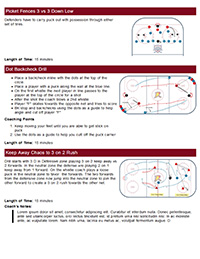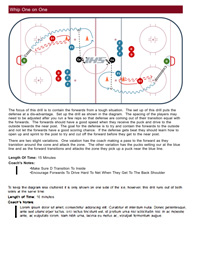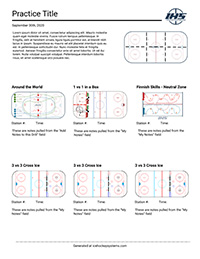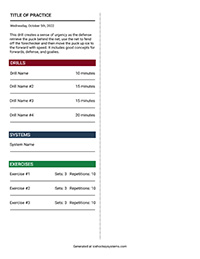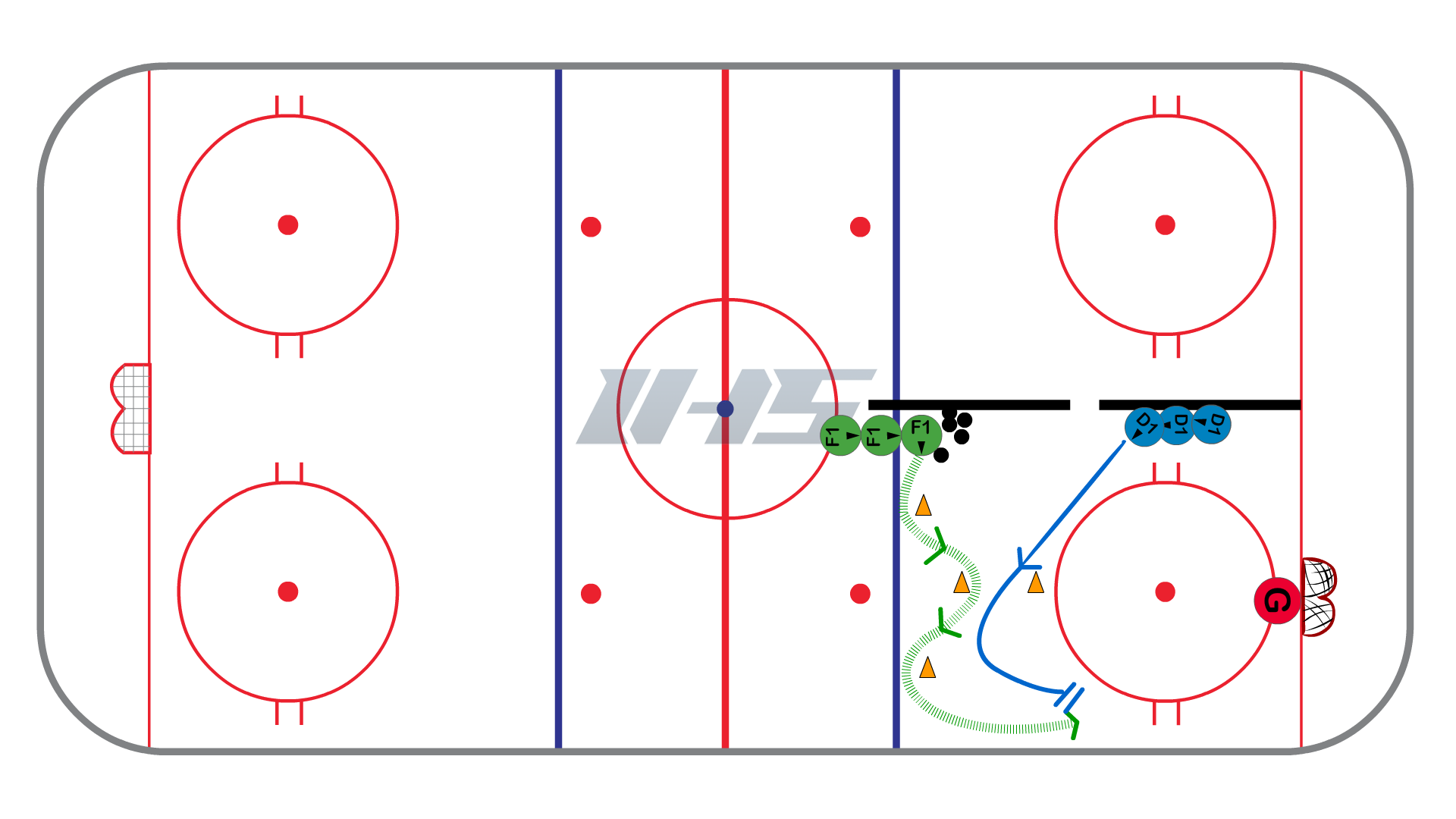
1 on 1 Fundamentals - A Station Based Practice
1 on 1 Fundamentals - A Station Based Practice

Practice Notes
Please Note: The Practice of the Week is designed to be utilized across multiple age levels. With that being said, we highly encourage you to adjust the drills based on your team's age and skill levels. These drills and practices can be modified to become more basic or more advanced.
The drills and games in this practice are designed to help your players work on 1 on 1's in various situations.
3 Key Focus Points
Offense:
- Head up - see where the open ice is and what the defenders position is
- Protect the puck - use your body and low center of gravity to keep the defender from the puck
- Use deception - use false information from your eyes, head, body, and feet to create space & separation from the defender
Defense:
- Eyes - keep your eyes focused on the players chest, not the puck.
- Stick on the ice - use short stabs and not a sweeping motion to achieve stick on puck.
- Positioning - utilize good angles & gaps.
Practice Logistics
*make sure players get reps at both offense and defense
- One coach warms-up the goalies while the other coach warms-up the players with 3 Speed Warm-Up Drill
- Break into 4 stations
- Set up Whip 1 on 1 in both ends of the ice
- Finish With Neutral Zone 3 v 3 Game (if time permits)
Practice Layout
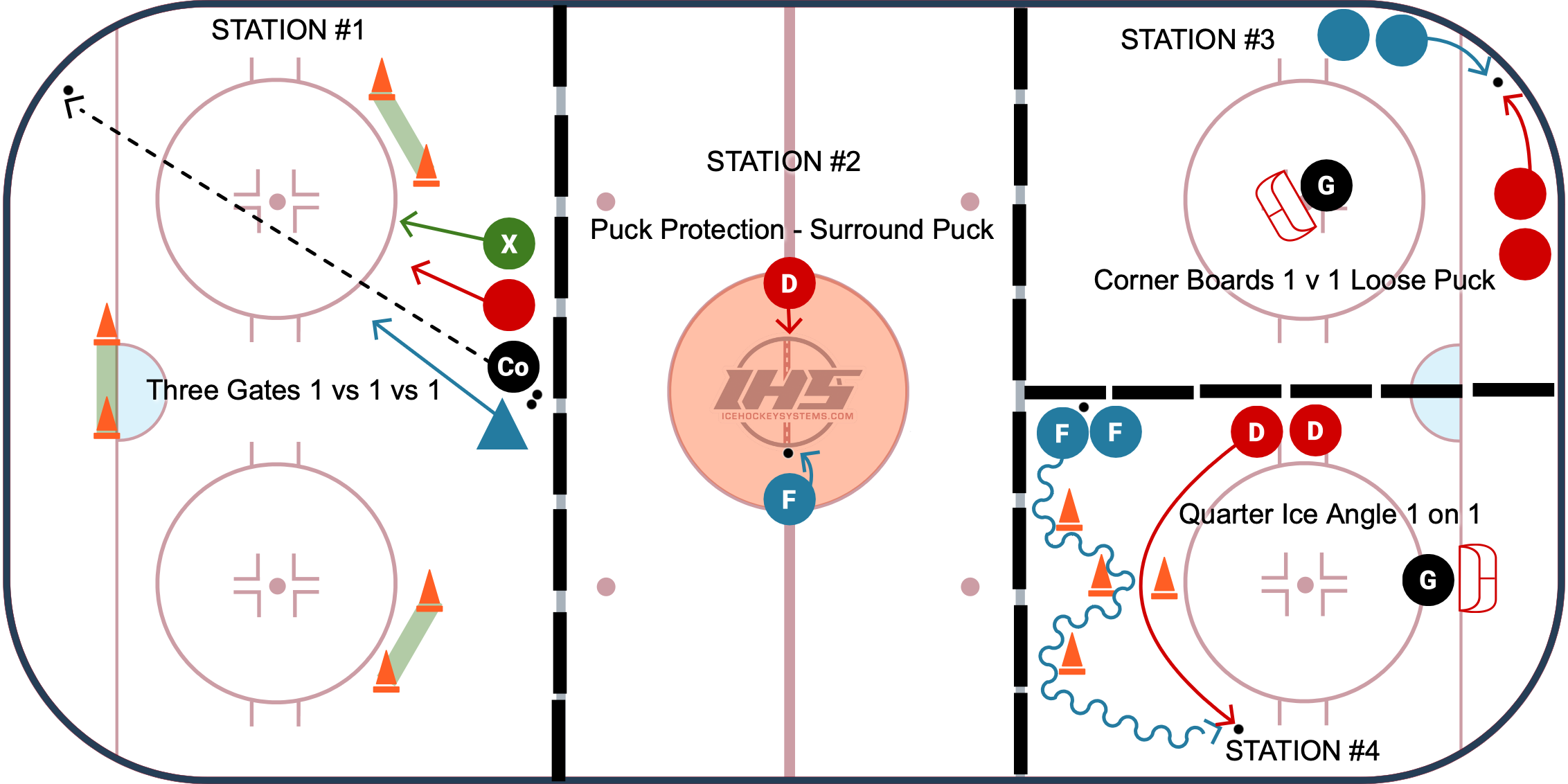
3 Speed Warm-Up Drill
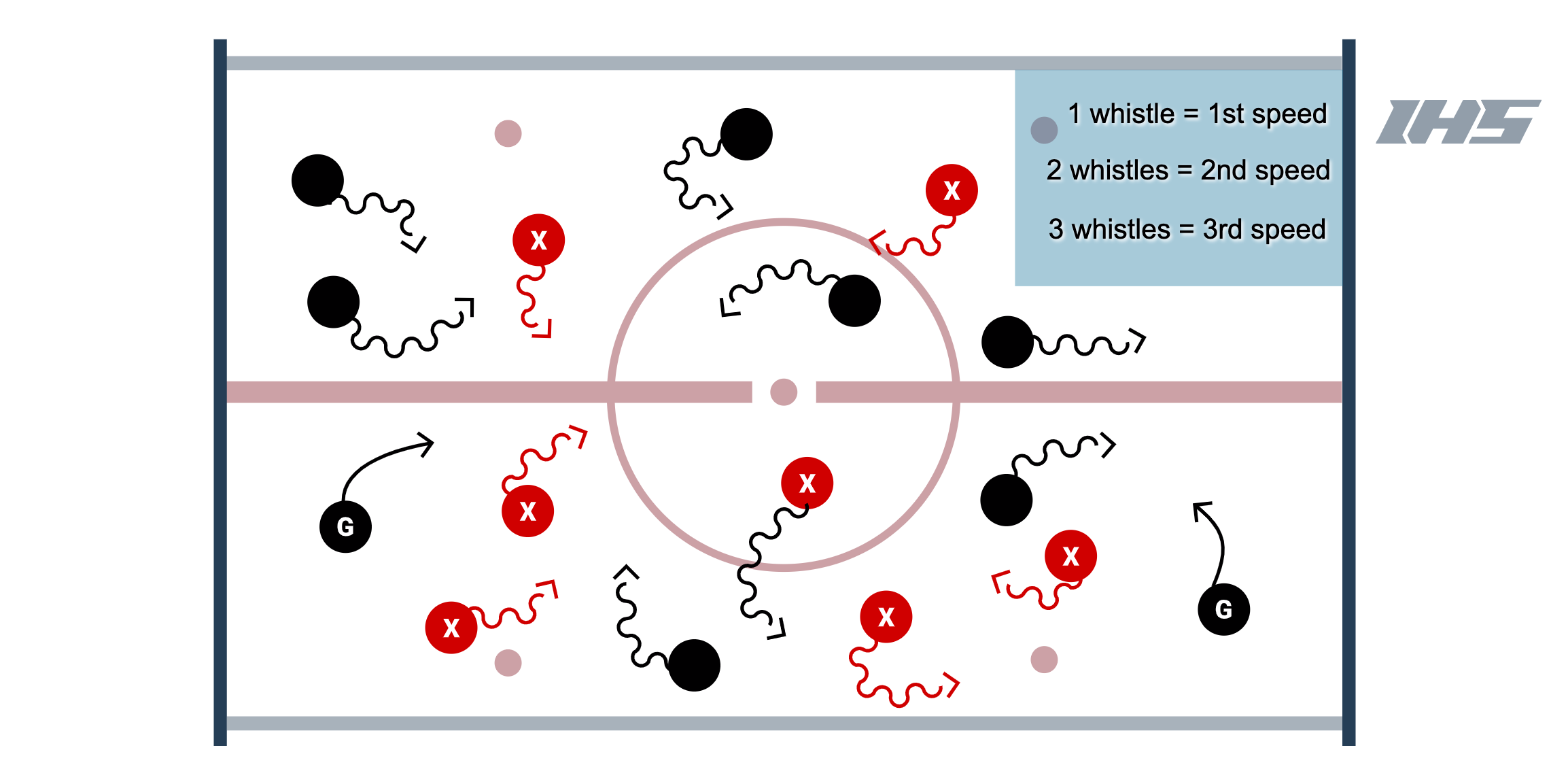
A warm-up drill that can be performed in any zone with the entire team. Coaches can customize this warm-up activity with different skills based on the age and ability level of the team.
Setup
- Each player has a puck.
- Whistle # 1 - players skate at 50% speed and their feet do not leave the ice.
- Skates are in the ice at all times and players move by driving their weight off of their inside edges. Players stickhandle the puck side to side with wide lateral movements as they shift their weight looking for open ice.
- Whistle # 2 - players skate at 75% speed and their feet can leave the ice.
- Be creative! Players can pick their feet up from the ice and they are moving at about 75% while being creative with tight control turns, sharp lateral movements, and still looking for open ice.
- Whistle # 3 - players skate at 100% speed.
- Be explosive and move their feet outside of your comfort zone. Jump to open areas of ice. Goalies skate backwards.
Coaching Points
- Players must keep head up and look for open ice during all 3 speeds.
Three Gates 1 vs 1 vs 1
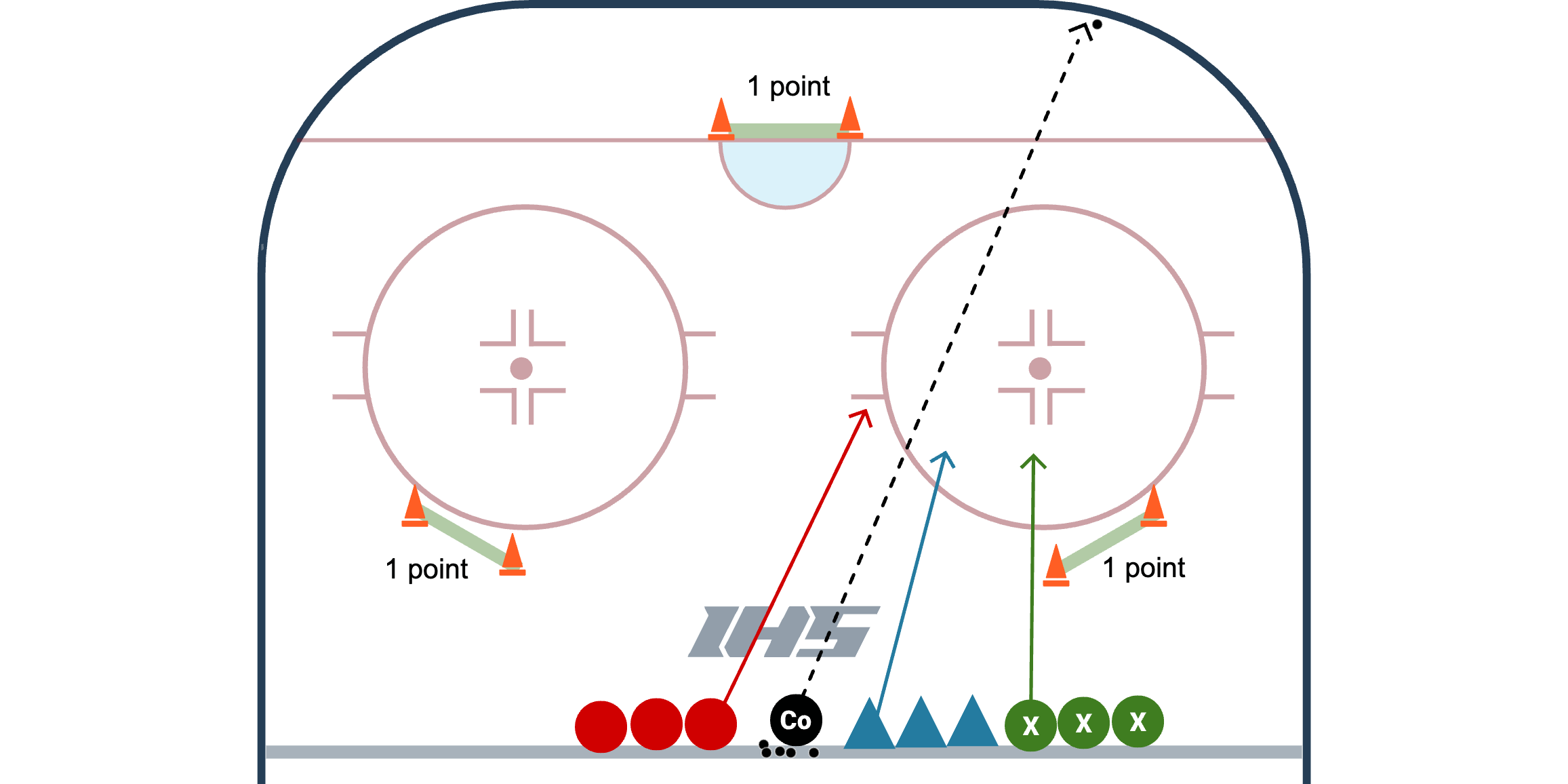
This game allows players to work on battling in tight areas, awareness, puck protection, and angling.
Set Up
Place 2 pairs of tires (gates) throughout the station. An example is shown in the diagram and animation. Divide the players into three different teams. The coach has the pucks in the middle of the ice at the blue line with the players lines up on both sides in their three groups.
How to Play
The coach will play a puck into the zone. One player from each team (total of three players) will go battle for the puck. The players are trying to carry the puck through one of the "gates" that are set up in the zone. Every time a player carries it through a "gate" they get one point. The players cannot carry it through the same gate two times in a row.
Coaching Points
When players have the puck encourage players them protect the puck and look for open ice. Deception is a good way to create open ice and opportunities to attack the "gates". When they don't have the puck the two defenders can work together to force the puck carrier into the dead areas of the ice by using angles and stick postitions.
Puck Protection - Surround Puck
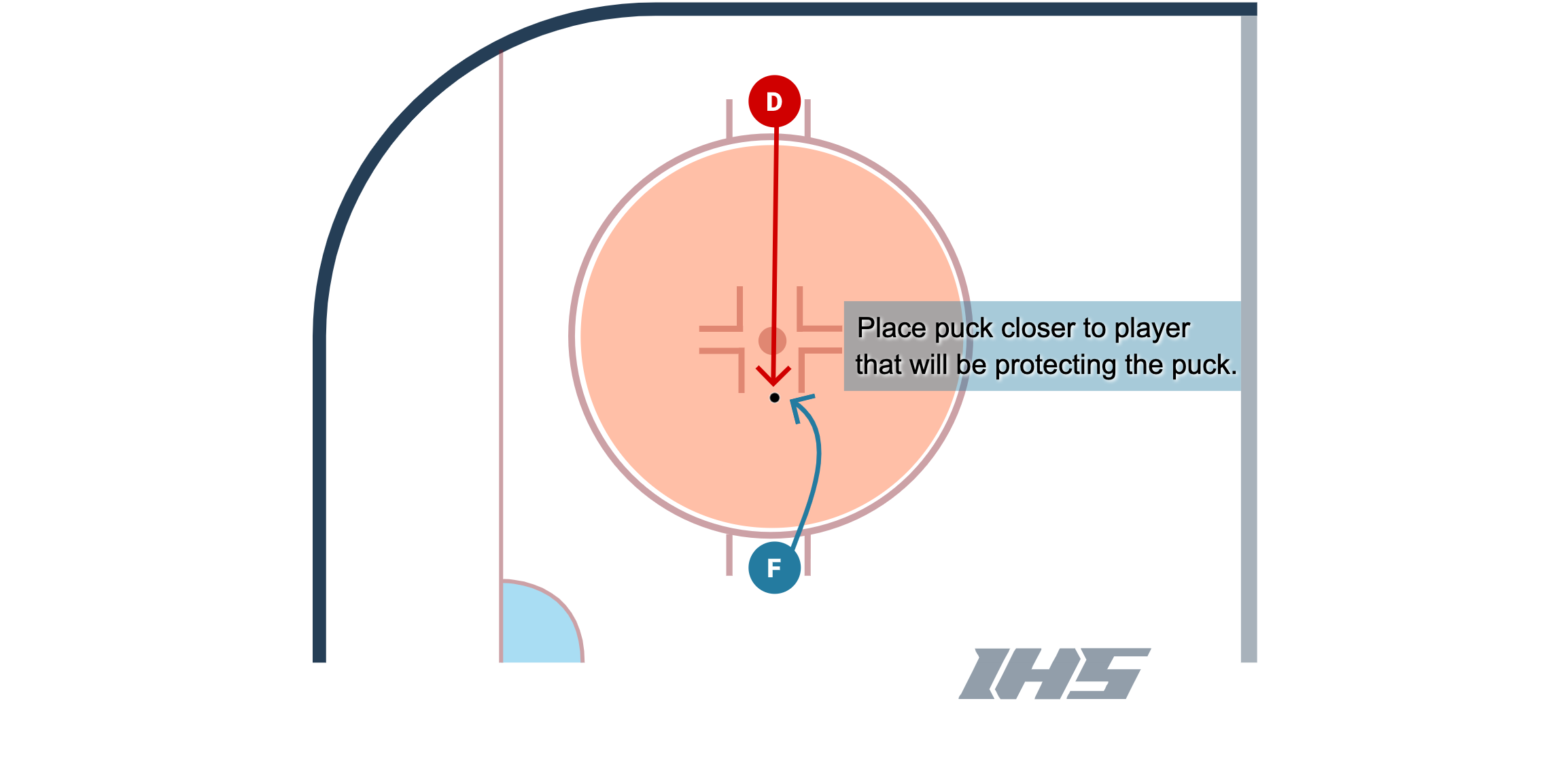
This puck protection drill can be done in one of the circles. To set it up place two players on opposite sides of the circle facing each other. One player will be designated as the puck protector. Place the puck closer to the puck protector to give them a slight advantage. On the whistle both players battle for the puck. As you see in the video the puck protector should take care the defender's stick and use their body to surround the puck. The puck protector works to keep the puck in the circle. Allow the players to battle until the puck protector looses possession of the puck.
Corner Boards 1 V 1 Loose Puck Battle
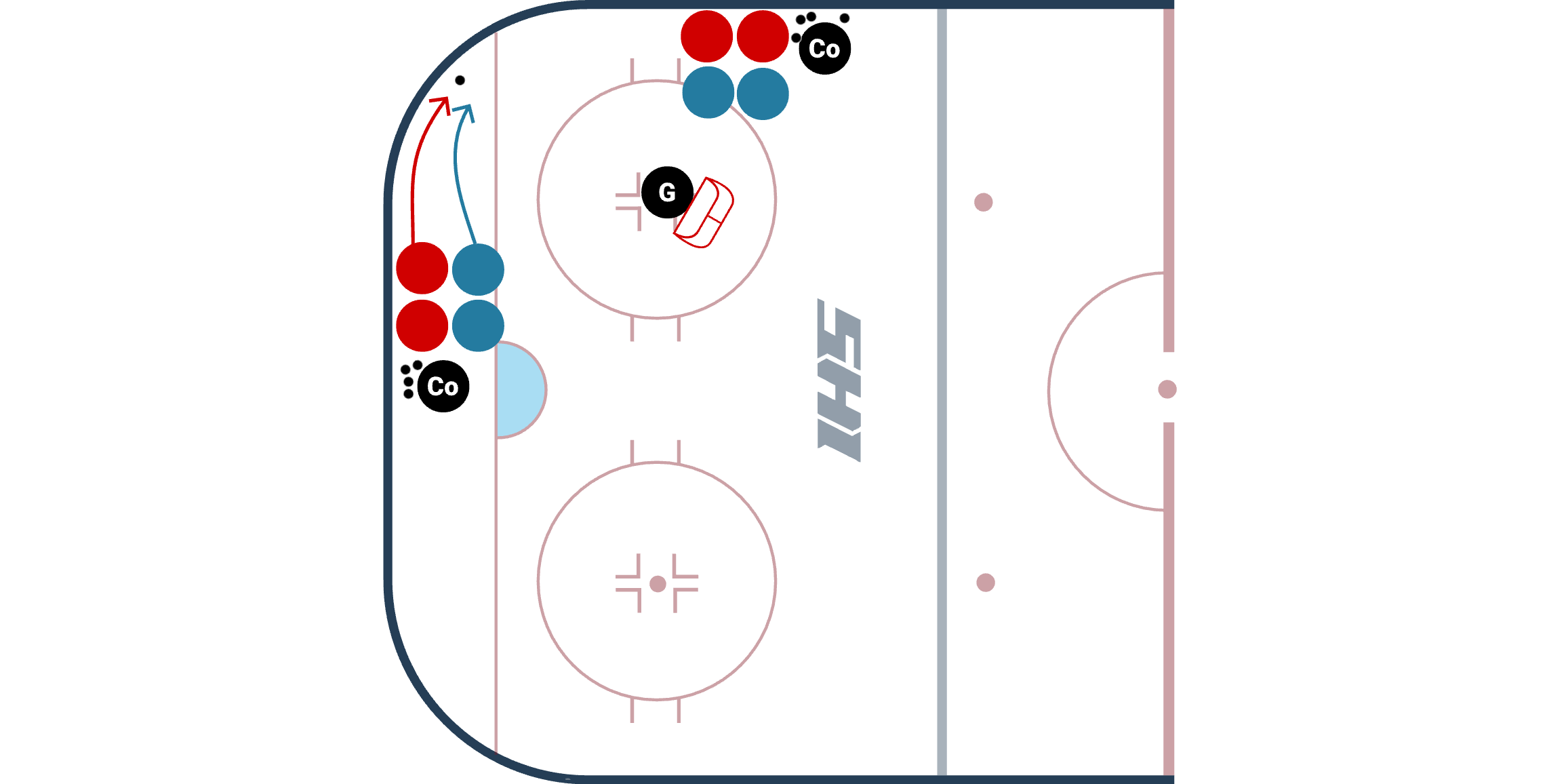
Corner Boards 1 V 1 Loose Puck Battle allows players & coaches to work on a very common play during the game, a loose puck battle along the boards. This is a competitive drill that can also progress to 2 V 2.
Setup
- On the whistle, 2 players battle in the corner for a loose puck.
- Whoever gets the puck off of the boards first is on offense and tries to score a goal while the other player defends.
- Defenders can knock the puck out of play or they can steal the puck, tag up at the goal line and then become an offensive player.
Variations
- Can make the battle 1 V 1 and progress to 2 V 2. View 2 V 2 Tag Up Example.
- Can allow the defending team to tag up at the goal line to become offense.
Coaching Points
- Defending players need to keep their sticks on the ice and play the body.
- Offensive players should work to protect the puck with their body and utilize their edges to be strong on the puck and create space with tight turns.
Quarter Ice Angle 1 vs 1
This is a station drill that only uses 1/4 of the ice surface so it is great for station based or ADM practices. It is a simple drill but teaches players about how to angle properly. The offensive players will start with a puck and slalom through the cones and then try to attack the net. The defensive player will go around the cone and try to time it so that they are able to angle the offensive player to the boards.
Coaching Points
- The defender should keep stick on the ice on the ice at all times.
- The defender should use stick position and proper angle to discourage offensive player from cutting back to middle of the ice.
- The defender should match the speed of the player they are chasing and check their hands into the wall.
Whip One on One
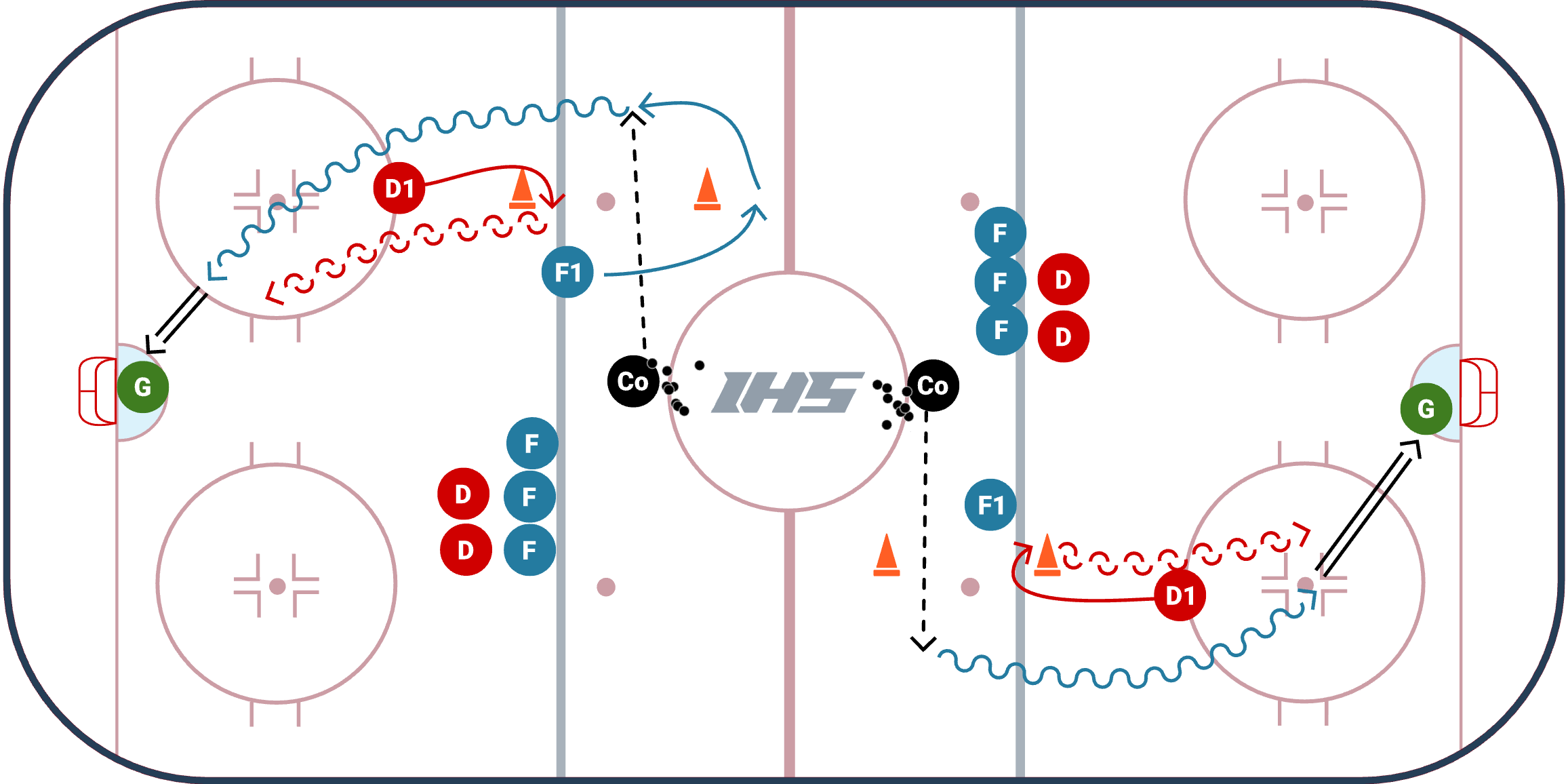
The focus of this drill is to contain the forwards from a tough situation. The set up of this drill puts the defense at a dis-advantage. Set up the drill as shown in the diagram. The spacing of the players may need to be adjusted after you run a few reps so that defense are coming out of their transition equal with the forwards. The forwards should have a good speed when they receive the puck and drive to the outside towards the near post. The goal for the defense is to try and contain the forwards to the outside and not let the forwards have a good scoring chance. If the defense gets beat they should learn how to open up and sprint to the post to try and cut off the forward before they get to the near post.
There are two slight variations. One vaiation has the coach making a pass to the forward as they tranistion around the cone and attack the zone. The other variation has the pucks setting our at the blue line and as the forward transitions and attacks the zone they pick up a puck near the blue line.
If you are short on time and have 4 nets you can set this up in all four quarters of the ice to get more reps in. Ideally though it's good to keep it as is for learning ice geography when attacking and defending.
Neutral Zone 3 vs. 3 Game
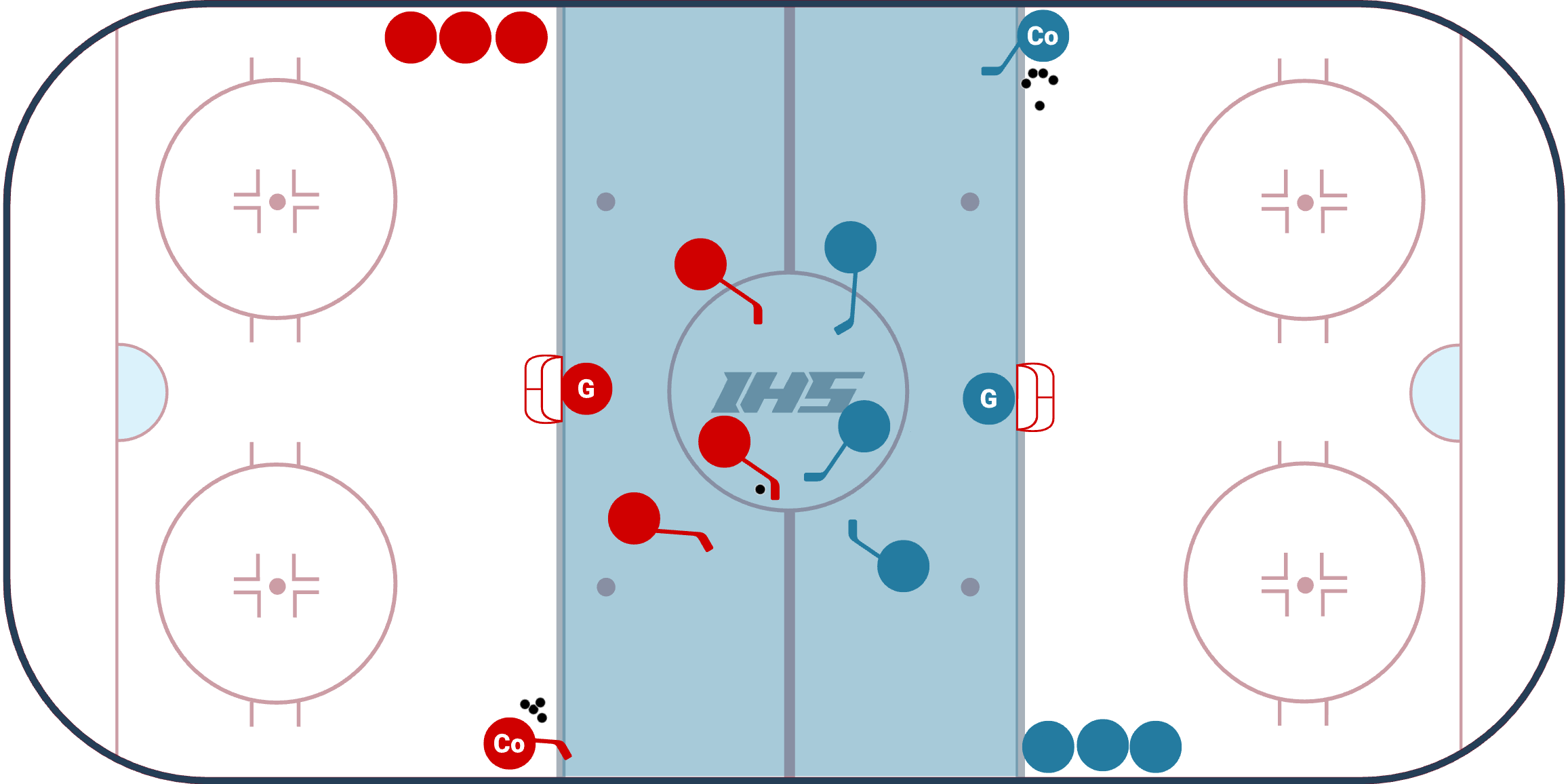
The Neutral Zone 3 vs. 3 Game is a great small area game that creates a lot of turnovers and transitions, which is common for the neutral zone. To be successful, teams will need to play with their head up, keep their sticks on the ice and communicate with their teammates.
Game Setup
- Teams line up in opposite corners of the neutral zone (as pictured in the video and diagram).
- Each team has a coach (or player) that is on their team and is lined up on the same blue line as them.
- Each coach (or player) needs to be aware of the game and they are required to pass their team the puck if the puck goes out of play, a goal is scored, a goalie makes a save, or the puck goes past the blue line on their end. Players can intentionally pass the puck out of their end to create a "breakout" situation where the coach will pass their team a new puck (you can see this example in the video if you watch closely).
- If the puck goes past the blue line it is out of play.
- Each team battles to score.
- The shift length should be anywhere from 15 - 45 seconds long.
Coaching Points
- Head up: Everyone with and without the puck needs to keep their head up and on a swivel. It is important to know where the puck is, where your teammates are and where the opposition is.
- Stick on the ice: This is important for the forwards (because it shows your teammate where you want the puck) and for the defense (it allows you to angle and cut off passing lanes).
- Communicate: There will be lots of new pucks and transitions so it is important to communicate with your teammates and coaches (or players) who are passing the new pucks.
- Move to space: Forwards should jump to open space and become an outlet for their teammate if they do not have the puck.
Variations:
- You can play this game in a 2v2 or 3v3 setup.
- You can allow players to pass the puck to their coach. This variation was not shown in the video.
1 on 1 Tips for Defenders
Coaching Points for a 1 on 1 (Defensively)
- On a rush the defense as to try and match the speed of the attacker.
- In defensive zone you have to take a good angle and try to dictate where you want the opponent to go.
- Make sure stick is on the ice with entire blade on the ice if possible.
- Use short stabs and not a sweeping motion to acheive stick on puck.
- Always face player and never turn back on opponent.
- Keep stability and never lunge at the opponent.
- Keep your eyes focused on the chest, not the puck.
- Try to go blade on blade while finishing with your body.
Sidney Crosby Puck Protection Montage
A powerful video displaying how hard Sidney Crosby, works at protecting the puck. He uses his body, low center of gravity, and edge work to keep the puck from the defenders. To create space and separation from defenders he uses tight turns, deception and cutbacks.
Additional 1 on 1 Resources
IHS Member Resources:
- Winning 1 On 1's In Hockey: a 40 minute video webinar from Topher Scott of The Hockey Think Tank.
- IHS Members can create their own practice plans that look like this. Learn how here.
